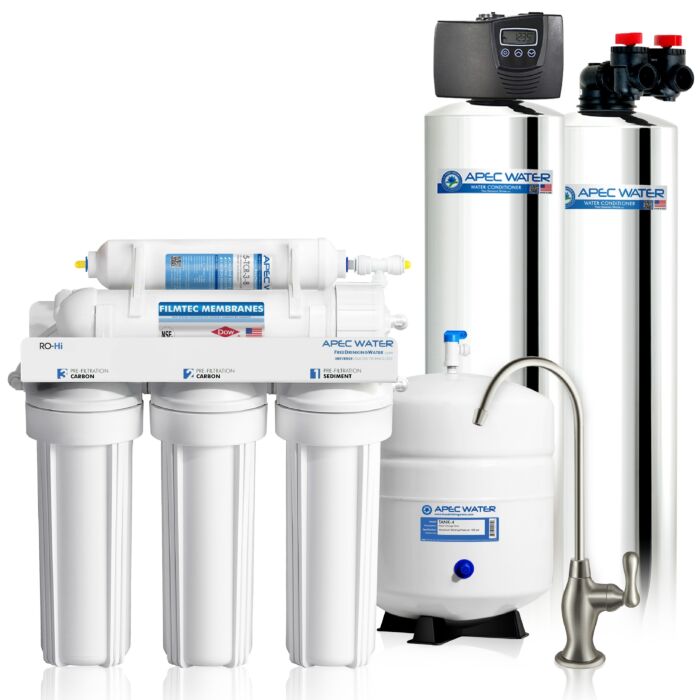The Of Home Well Water Treatment Systems
Table of ContentsThe Best Guide To Whole House Reverse Osmosis System For Well WaterWater Filtration System Companies for DummiesWhat Does Whole House Reverse Osmosis System For Well Water Mean?Getting The Whole House Reverse Osmosis System For Well Water To WorkThe Only Guide for Home Well Water Treatment Systems
Every therapy system has its very own benefits and also disadvantages. Some of the more common treatment methods utilized to manage specific pollutants are pointed out in Table 1.Intro Tidy water is a crucial part of life. Just think of exactly how typically you utilize water every dayfor cooking, drinking, cleaning your garments and also recipes, brushing your teeth, or showering. You would not wish to do this with filthy water, right? Purification is one vital action in water clean-up. During the filtration process, particles or contaminations such as chemicals and also germs are separated from the solution that is filteringed system.

Not known Facts About Best Water Filter For Drinking Water

The surface location to volume proportion, the time the water spends in call with the activated carbon is likewise an important aspect that determines the effectiveness of the filtration procedure - home well water treatment systems. The longer the contact time or the slower the circulation price of the water with the filter, the more adsorption can happen.

The Basic Principles Of Whole House Reverse Osmosis System For Well Water
The very first cup (0 declines per mug of liquid) will certainly stay colorless. As you have 2 mugs of liquid in each of your mugs, you have to include 4 drops of food shade to the cup that you classified with 2 decreases per cup of liquid and also 10 decreases of food shade to the cup that you classified 5 decreases per mug of liquid.
Next off, prepare the turned on carbon for your filter. best water filter for drinking water. You will test three various experimental problems (granular turned on carbon, powdered activated carbon and no activated carbon) for every of the color concentrations. As you will certainly examine all three color concentrations, you need to label 3 cups for every kind of carbon you evaluate.
Your label must Full Report inform what kind of carbon and what color concentration you will utilize (0, 2 or 5 decreases per cup of liquid) for that cup. At the end, you ought to have 9 identified cups. Utilize a scale to weigh out 3 grams of granular triggered carbon into each cup that you labeled with granular carbon.
Not known Details About Water Filtration Solutions
The staying 3 cups (no triggered carbon) remain vacant. Note: Prevent breathing in the triggered carbon powder and also try not to distribute way too much go to my site of the powder right into the air. You must have 3 vacant cups as well as 6 mugs full of turned on carbon: 3 mugs with the powdered type and also 3 with the granular form.
Take 4 coffee filters and also pile them into each other. As shown in Number 5, press the filters right into the top of a mug, fold their sides over the cup's rim, and protect them with a rubber band.
Filtering Your Samples In this section, you will prepare an additional 9 mugs for your tinted water examples. Prior to you begin the filtering system procedure, prepare your water samples for each filter using the water samples you prepared in step 1 of "Preparing Your Examples and also Filters".
See This Report about Water Filtration Solutions
5 cups (regarding 120 m, L) of the dye solutions that you prepared in action 1 of "Preparing Your Examples and Filters", to each of the cups with the particular tag. 5 mugs dye blog here service left over that you can make use of at the end of the experiment for color comparison.
For each experimental condition and dye concentration, place the colored water example, the turned on carbon and also the purification mug following to each various other. You need to have a collection of 9 mugs for each of the 3 speculative problems (27 overall).
Duplicate this table right into your notebook three times, when for every type of carbon (granular triggered carbon, powdered triggered carbon, no triggered carbon). You will rate the shade of your water examples on a range from 010, where 0 is completely clear (the cup on the left in Figure 4) and 10 is the darkest (the cup on the right in Number 4).